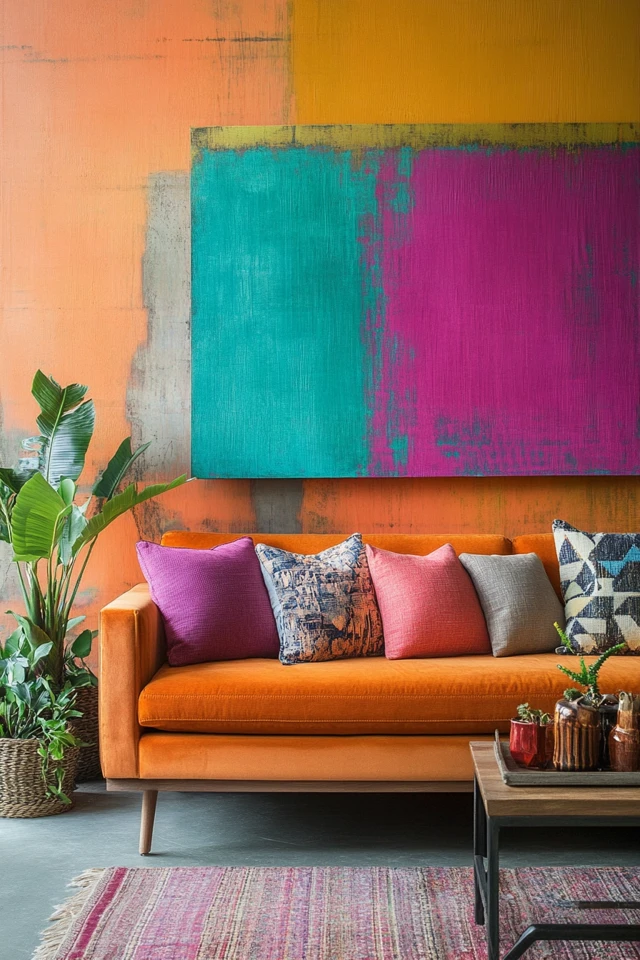Introduction
Color blocking is a bold and dynamic design trend that has made waves in fashion, art, and interior design. It involves combining contrasting or complementary colors in clean, defined sections to create a striking visual impact. While it’s a technique that can bring energy and modernity to a space, it can also feel overwhelming or forced if not executed thoughtfully. The challenge lies in finding that perfect balance—creating color block designs that feel fresh, intentional, and harmonious without clashing or dominating the room.
My first encounter with color blocking was in a dining room project for a client who loved color but was hesitant about committing to bright hues. Instead of painting all the walls a bold color, we opted for a color-blocked accent wall. A vibrant mustard yellow anchored the bottom section, with a cool slate gray on top. The division was marked by a sleek wooden trim, giving the design a crisp, tailored finish. This subtle but impactful approach not only brought energy to the room but also kept it grounded and cohesive.
In this guide, we’ll dive into creative, approachable strategies for incorporating color blocking into your home. Whether you’re experimenting with bold contrasts or sticking to softer shades, these techniques will help you achieve a balanced, stylish look that feels modern and inviting.
The Perfect Design for You
Color block strategies are ideal for anyone who:
- Wants to introduce bold colors to their home but isn’t ready to commit to fully painted walls or furniture.
- Appreciates clean, modern aesthetics with a touch of artistic flair.
- Struggles with balancing vibrant hues and wants a structured approach to color.
- Loves experimenting with creative techniques that feel both playful and polished.
Imagine a living room where a deep emerald green section frames the TV wall, contrasted by neutral tones on the surrounding walls. Or picture a bedroom with blush pink and soft beige blocks creating a soothing, layered effect behind the bed. These spaces exude energy and style while remaining balanced and approachable—showcasing the transformative power of color blocking when done right.
Picture Gallery

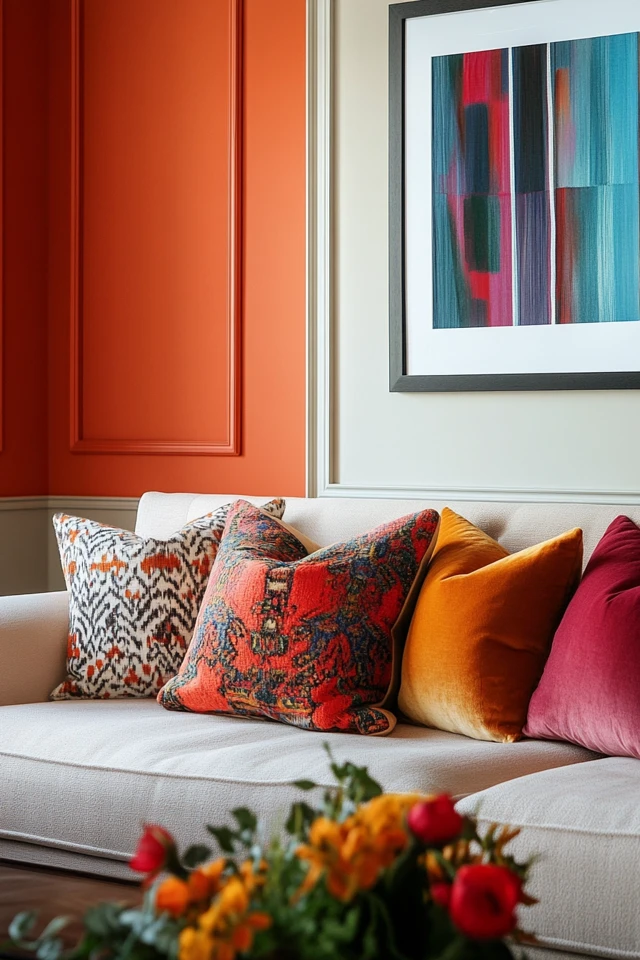
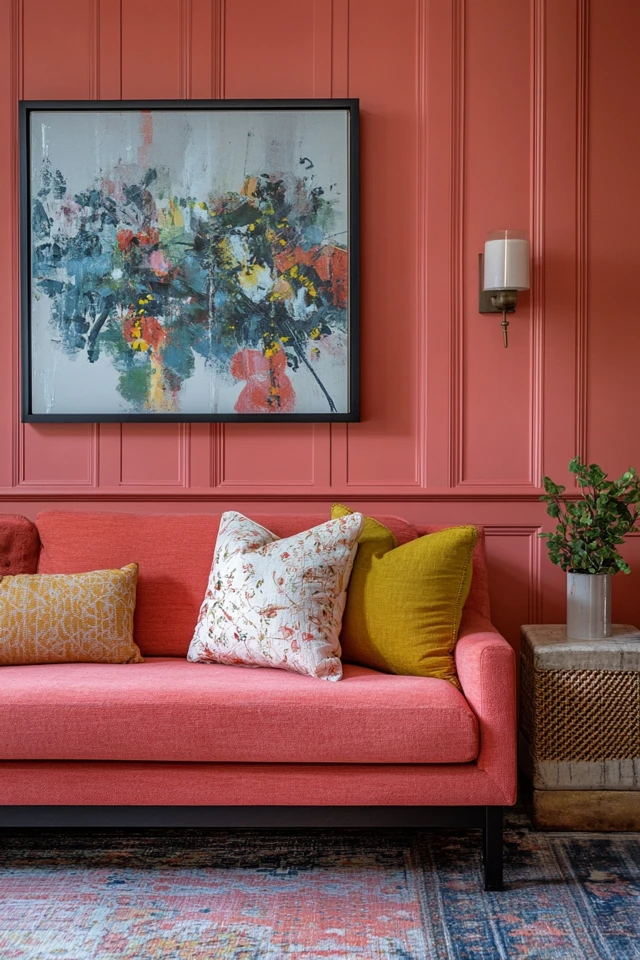
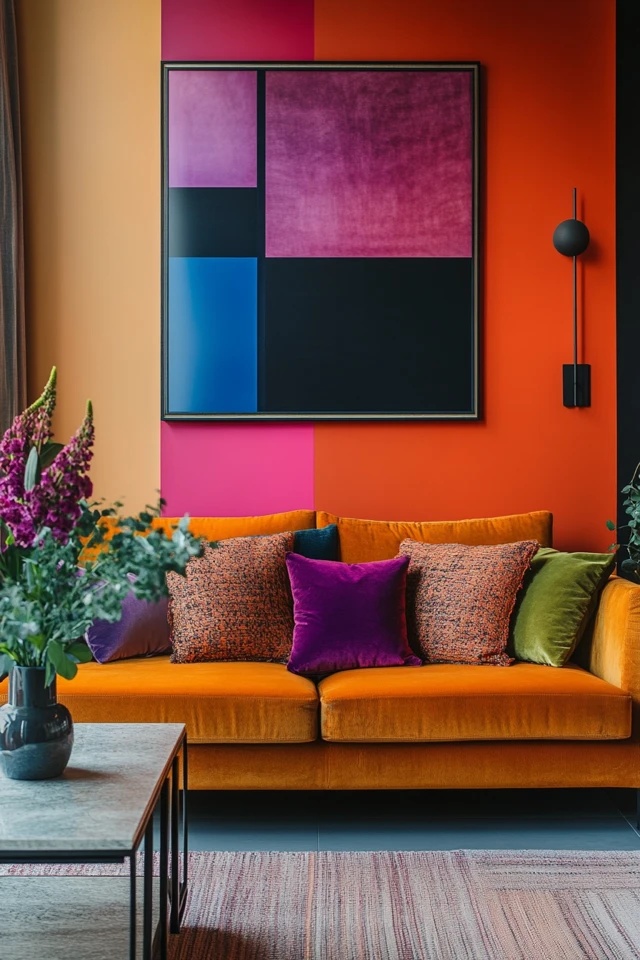
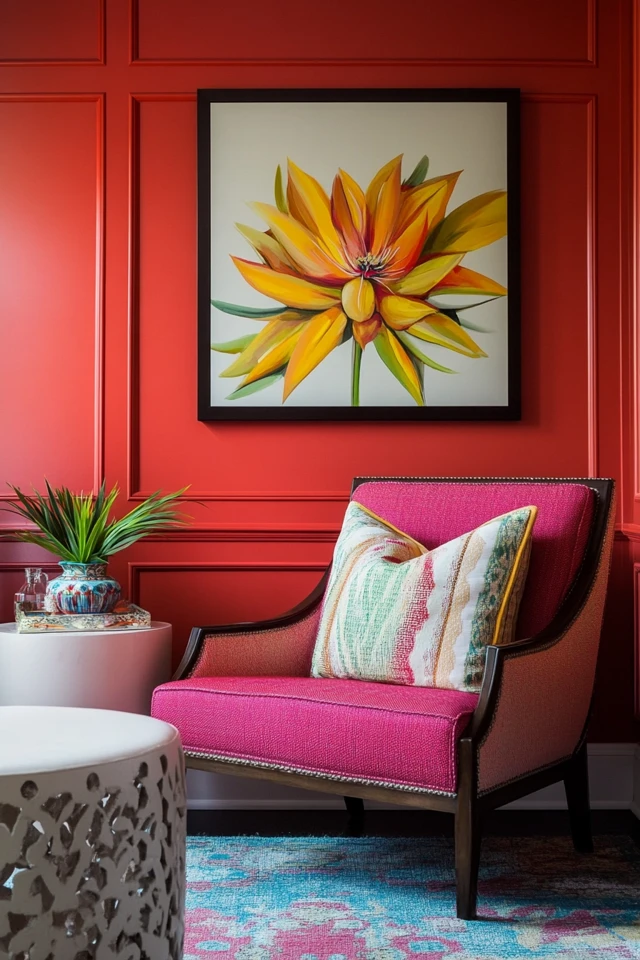
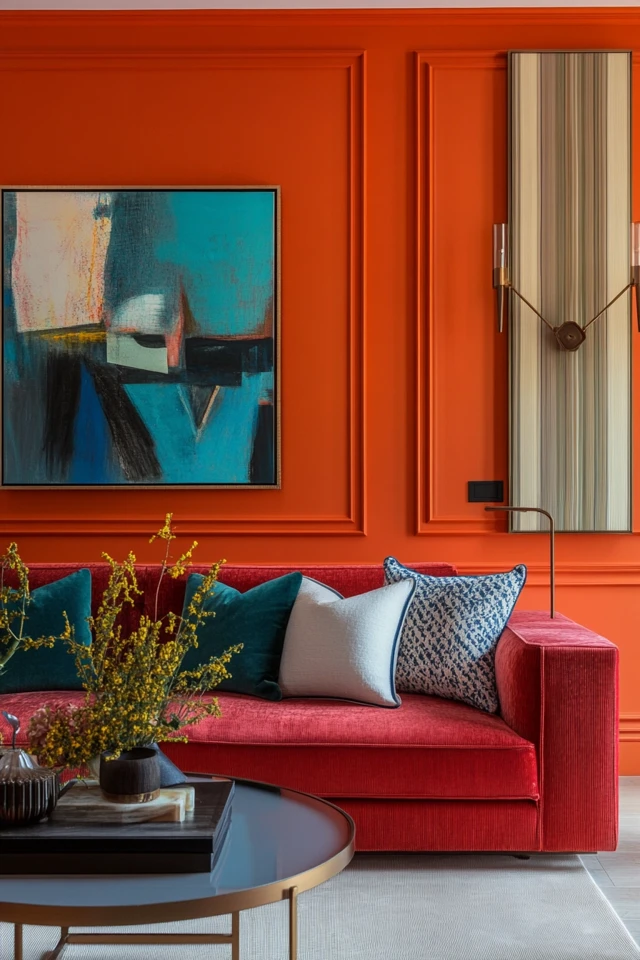
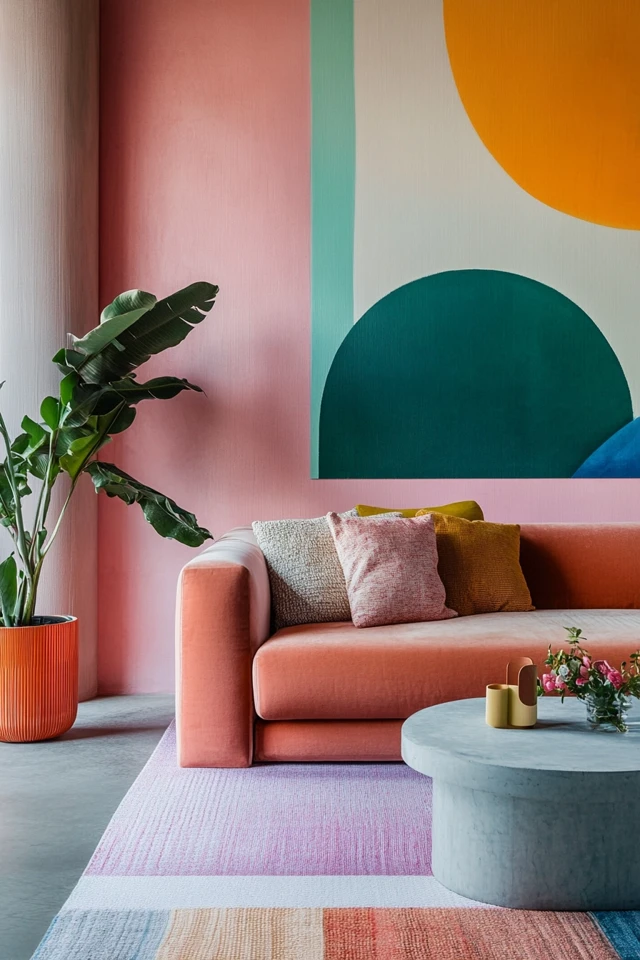
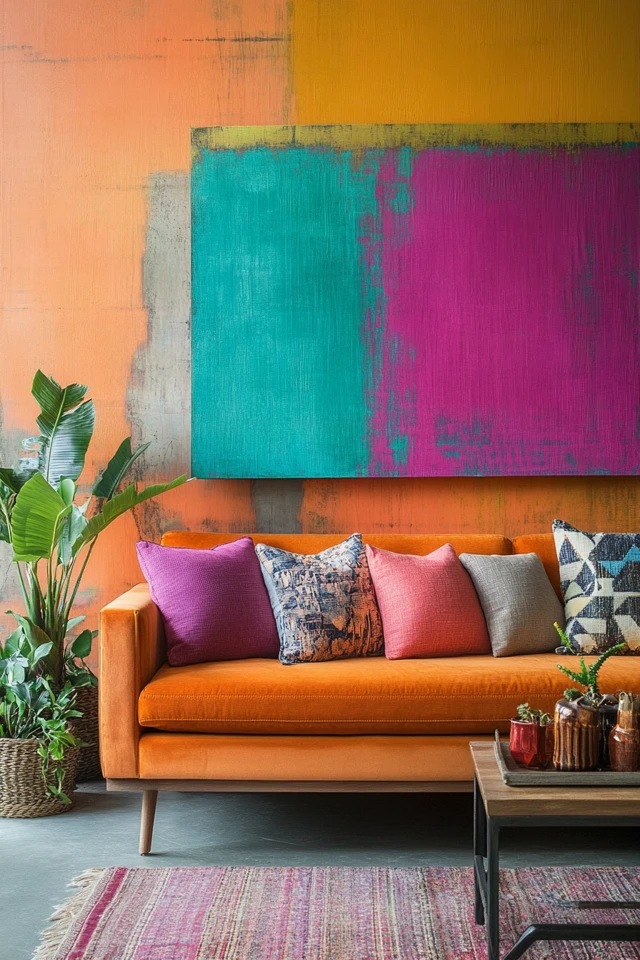
Why Color Blocking Works
Color blocking is a versatile design technique with both visual and emotional benefits. Here’s why it’s so effective:
- Creates Visual Focus: Color blocks naturally draw the eye, making them perfect for defining focal points or anchoring spaces.
- Adds Depth and Dimension: Layered color blocks can give a flat wall or space more texture and complexity.
- Defines Zones: In open-concept spaces, color blocks help delineate areas, creating subtle divisions without physical barriers.
- Injects Personality: Bold or unexpected color combinations infuse the space with energy and individuality.
- Offers Flexibility: Unlike full-room color schemes, color blocks are easier to update or modify, making them a low-commitment way to experiment with bold shades.
Designers often describe color blocking as “painting with purpose.” By using color intentionally, you can transform the mood and style of a space without overwhelming it.
How to Execute Color Block Strategies That Feel Fresh, Not Forced: Step-by-Step
1. Choose a Color Palette
- Start by selecting a color scheme that complements your existing decor:
- Use the 60-30-10 rule: 60% of a dominant neutral, 30% of a secondary shade, and 10% of an accent color.
- Experiment with complementary (opposite on the color wheel) or analogous (next to each other) colors for balance.
- For a softer look, stick to monochromatic shades in varying tones.
- A well-curated palette ensures your color blocks feel cohesive rather than random.
- Example: In a bedroom, pair a dusty rose pink with a deep charcoal gray and a small pop of gold for a fresh, elegant look.
2. Define the Placement of Blocks
- Identify areas where color blocks will have the most impact:
- Walls: Use blocks to frame artwork, define an accent wall, or add interest to a plain surface.
- Ceilings: Add an unexpected color block to the ceiling for a bold, modern touch.
- Furniture: Incorporate color blocking on cabinet doors, bookshelves, or painted dressers.
- Accessories: Use rugs, curtains, or throw pillows with color block patterns to tie the room together.
- Strategic placement helps the color blocks enhance rather than dominate the space.
- Example: In a living room, create a color block corner by painting a section of the wall behind the sofa in a contrasting hue.
3. Experiment With Bold vs. Subtle Contrasts
- Decide whether you want your color blocks to be high-contrast or tone-on-tone:
- High-contrast: Pair bold colors like navy blue and mustard yellow for a dynamic, energetic look.
- Tone-on-tone: Use similar shades, like pale blue and teal, for a more subdued, sophisticated effect.
- Contrasts can be tailored to suit your style and the room’s purpose.
- Example: In a kitchen, high-contrast blocks of white and forest green on cabinetry create a fresh, modern vibe.
4. Incorporate Geometric Shapes and Lines
- Use clean lines and shapes to create well-defined blocks:
- Horizontal divisions: Split the wall horizontally with one color on top and another on the bottom, separated by a thin trim or molding.
- Vertical divisions: Add vertical stripes or sections for a contemporary, architectural feel.
- Abstract shapes: Create playful designs with diagonal lines, arches, or irregular geometric forms.
- Geometric shapes add structure and keep the design feeling intentional.
- Example: In a kids’ room, paint an oversized triangle in pastel hues on one wall for a fun, whimsical touch.
5. Layer Colors for Depth
- Use overlapping or layered color blocks to create dimension:
- Start with a base color and layer additional shapes or sections on top.
- Play with transparency by using muted tones or semi-gloss finishes for subtle overlays.
- Layering gives your design a sophisticated, multidimensional look.
- Example: In an office, layer soft lavender blocks over a pale gray wall to create a calming, textured background.
6. Use Accessories to Echo the Blocks
- Tie the color block design together by repeating the colors in accessories:
- Use throw pillows, vases, or rugs in the same shades as the blocks.
- Choose artwork or framed prints that incorporate the same color palette.
- Accessories create continuity and reinforce the design without overwhelming the space.
- Example: In a living room with teal and white blocks, use teal curtains and a white ceramic vase to echo the design.
7. Balance Bold Blocks With Neutrals
- Offset bold color blocks with neutral tones to maintain balance:
- Pair vibrant blocks with white, gray, or beige walls and furniture.
- Use neutral trims or borders to ground the design.
- This approach ensures bold colors feel fresh rather than overpowering.
- Example: In a dining room, combine a color-blocked yellow wall with neutral wood furniture and a gray rug for a balanced look.
8. Opt for Small-Scale Applications
- Experiment with color blocking in smaller, less permanent ways:
- Paint the inside of bookshelves or the edges of door frames in contrasting colors.
- Use peel-and-stick wallpaper or decals to create temporary color blocks.
- Small-scale applications allow for creativity without long-term commitment.
- Example: In a home office, paint the back panel of a bookshelf in a bold red to create an unexpected pop of color.
9. Play With Finishes and Textures
- Combine different paint finishes or textures for a unique twist:
- Pair matte and glossy finishes to create subtle contrast.
- Use textured paint or wallpapers to add depth to the blocks.
- This approach adds interest and sophistication to the design.
- Example: In a bedroom, combine a matte navy block with a metallic gold block for a luxurious, layered effect.
10. Test Before Committing
- Test your color combinations and placement before committing:
- Use swatches, painter’s tape, or small samples to visualize the design.
- Observe how the colors look in different lighting conditions.
- Testing ensures your color block design feels cohesive and intentional.
- Example: Tape off a section of the wall and paint small sample blocks to finalize your palette and layout.
FAQ
1. Can color blocking work in small spaces?
Yes! Use lighter colors or tone-on-tone blocks to add depth without overwhelming the space. Vertical divisions can make a room feel taller.
2. How do I prevent color blocking from feeling too busy?
Stick to a limited palette (2–3 colors) and balance bold blocks with neutrals or softer shades. Avoid overloading the room with patterns or additional colors.
3. Can I use color blocking in rental spaces?
Absolutely! Temporary solutions like peel-and-stick wallpaper, decals, or painted furniture allow you to experiment without permanent changes.
4. Is color blocking only for modern designs?
No! Color blocking can be adapted to suit traditional, eclectic, or bohemian styles by choosing appropriate colors and patterns.
5. Can I mix color blocking with patterns?
Yes! Keep the patterns subtle and ensure they share a color or style with the blocks for a cohesive look.
Variations
- Minimalist Style: Stick to monochromatic or neutral blocks with clean, geometric shapes for a modern, understated look.
- Bold and Playful: Use bright, contrasting colors and abstract shapes for a fun, energetic vibe.
- Scandinavian Influence: Pair muted pastels with natural wood tones for a soft, calming aesthetic.
- Industrial Edge: Combine deep, moody colors with metal or concrete finishes for a modern, edgy feel.
- Bohemian Flair: Layer earthy tones and organic shapes to create a warm, eclectic style.
How to Showcase It
- Living Rooms: Use color blocks to frame a TV wall or create a bold backdrop for a gallery wall.
- Bedrooms: Create a layered color-blocked headboard design for a striking focal point.
- Dining Rooms: Add a horizontal block to define the dining area in open-concept spaces.
- Bathrooms: Use contrasting blocks of tile or paint to add interest to a small powder room.
- Home Offices: Frame your workspace with a bold color block to create a defined, inspiring area.
Occasions to Feature It
- Everyday Living: Use color blocking to bring energy and style to frequently used spaces.
- Entertaining Guests: Create a dramatic, color-blocked accent wall as a conversation starter.
- Seasonal Updates: Experiment with warm or cool tones to reflect the season’s mood.
- Creative Workspaces: Use bold colors to energize and inspire in office or studio spaces.
- Children’s Rooms: Play with fun, vibrant blocks to create a whimsical, playful environment.
Conclusion
Color blocking is a versatile design technique that can make any room feel fresh, modern, and full of personality. By carefully selecting colors, shapes, and placements, you can create impactful designs that feel balanced and intentional without being overwhelming.
Whether you’re transforming an entire wall or adding subtle accents to furniture or decor, color blocking is an accessible and creative way to refresh your space. So, grab your paintbrush, experiment with bold ideas, and watch as your home comes alive with the energy and artistry of color blocking!

